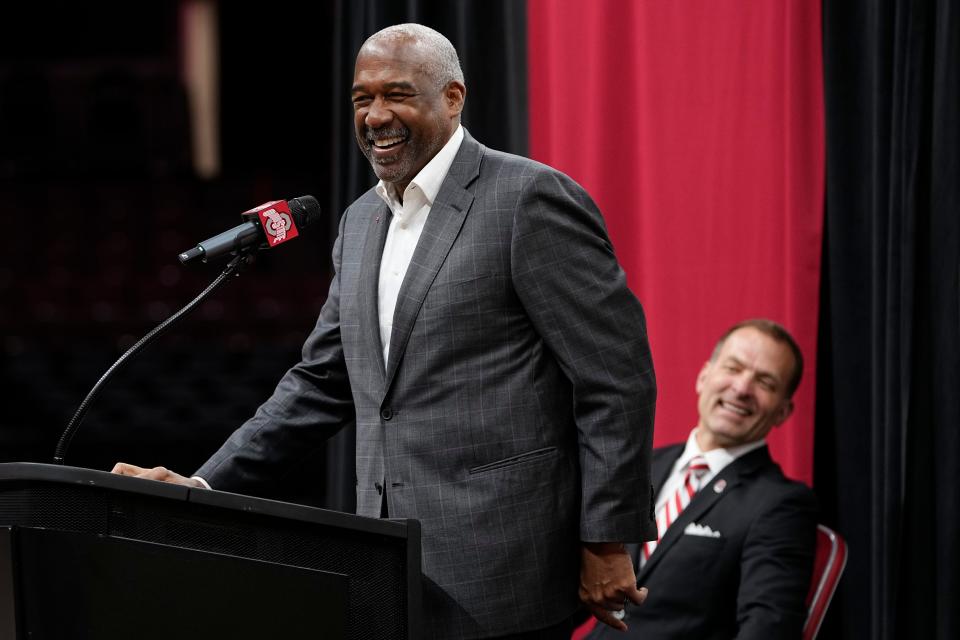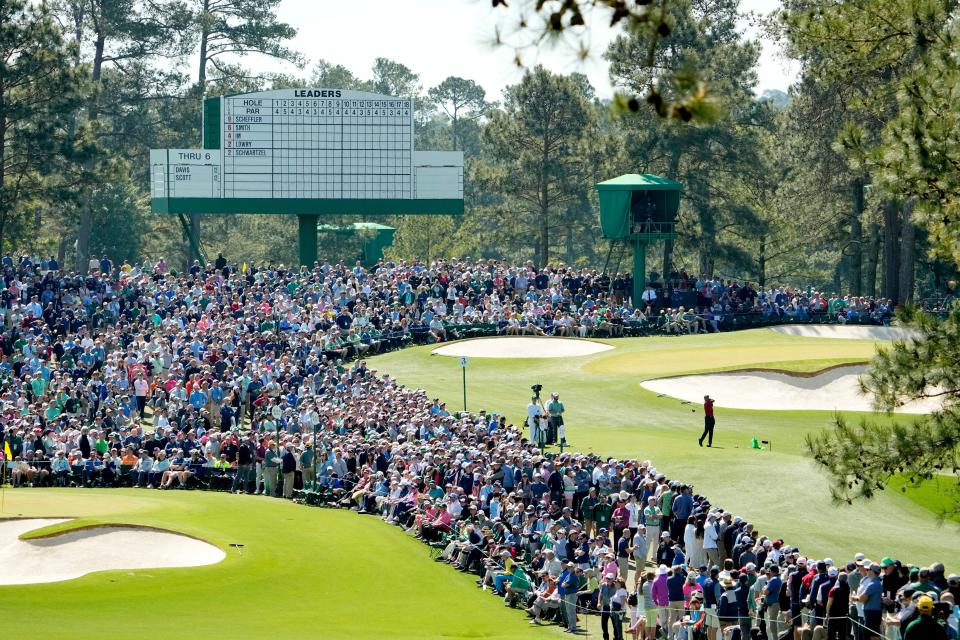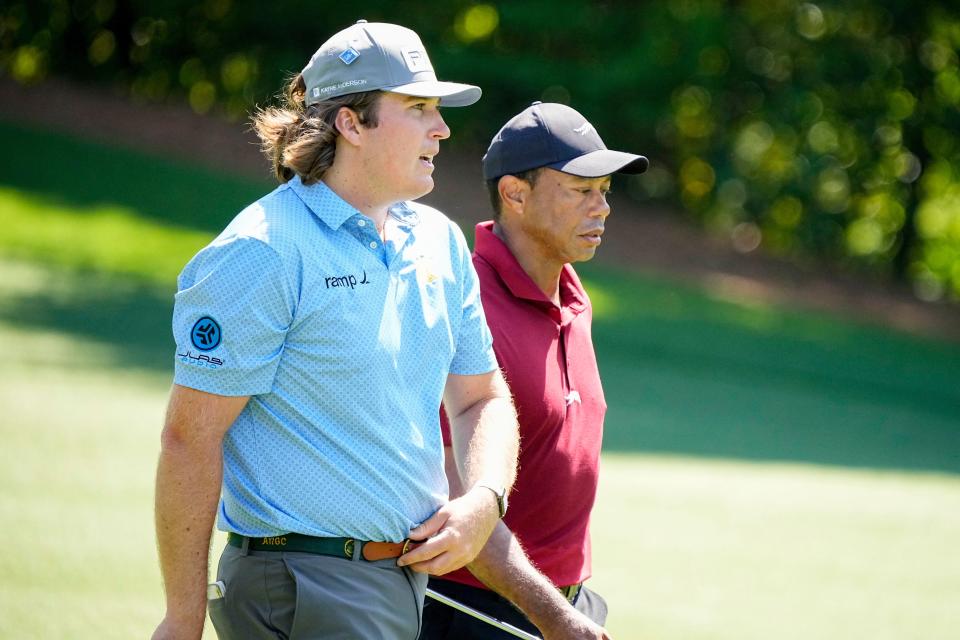Ohio State athletic director Gene Smith 'would hate it' if football broke away: Oller
Ohio State athletic director Gene Smith and I have not always seen eye-to-eye on the who, how and whys of college sports. Any friction probably has to do with my tendency toward sarcasm and his propensity to schmooze, as much as it does the issues. Oil and water. We’d make a fantastic podcast team.
But as Smith addressed media and staffers Thursday as part of his farewell tour – he is retiring after 19 years at OSU – it struck me that we are in lockstep on what I consider the No. 1 non-negotiable: college football should not stray from its academic roots to become a professional minor-league sport.
College football is big business, but the sport is married to education in important ways, and should remain so. Smith addressed the possibility of football separating from the university, where players are no longer students, where OSU licenses its name and leases its facilities and the association between school and sport is negotiated.
“I’d hate it. I think whatever model exists has to be tethered to education,” Smith said. “All the blessings I’ve had thinking back, not just football players, athletes over the years, we’ve changed so many people’s lives.”
Granted, sometimes the change is minimal.

“We have them come to us and they’re very mature and focused and get things done and we’re facilitating their time here and helping them develop,” Smith said.
As often as not, however, an 18-year-old arrives at Ohio State acting like a kid more than an adult.
“Some come to us at a very immature level and we do a great job of getting them maturity and a great job of helping the light bulb come on for them,” Smith said. “I just think in higher education we have to keep it tethered to education. If not, if it’s not a part of that, then make it semi-pro and take it outside the institution and you pay the institution a contract to use the stadium.
"But that model would bother me, because I would know that those student-athletes who, regardless of the fact they might be getting some level of money, they’re not being taught how to live the next part of their lives. That’s probably old-school in me, but I’m just passionate about giving these young people the opportunity to be educated.”
I have enough old-school thinking in me, too, to preach a similar message. I ran track at OSU – after Jesse Owens, believe it or not – and the sport was something we did at our school, not apart from it. The name on the front of the jersey still matters.

CBS Masters ratings continue to drop
Golf has seen an uptick in play since the pandemic. But seeing golf being played continues to decline.
Sports Business Journal reported on Tuesday that CBS drew 9.58 million viewers for Sunday’s final-round telecast of the Masters – the lowest ratings since 2021, when 9.45 million viewers watched Hideki Matsuyama win the green jacket.
Not including the COVID years of 2022-21, it was the lowest viewership since 1993.
What’s going on? A couple of things. First, LIV has siphoned off many of golf’s more interesting players, without viewer eyeballs going with them. LIV’s ratings remain abysmal. True, the Masters brought many of the LIV and PGA Tour players together under one roof, which would seem to increase interest. But the buzz did not follow.
What we’re learning is out of sight out of mind. Most golf fans have kind of forgotten that Dustin Johnson and Cameron Smith exist. It also did not help that the biggest names and most interesting players in LIV did not contend at Augusta National.
There also is a general fatigue among fans over the Tour vs. LIV faceoff, not to mention the money squabbles that have soured a certain percentage of the golf populace.
But it’s not all the Saudis’ fault. Streaming golf over digital platforms continues to grow – the Masters might have the best app on earth – with overall tour digital visits up 18% over 2023. Social media engagements also are up across the board.
So while TV ratings concern golf’s execs, at least the higher-ups at CBS, (ESPN’s Thursday and Friday Masters broadcasts were the network’s highest since 2015) there is optimism that the sport remains attractive to viewers, who simply are tuning in differently.
But pessimism is out there, too.
As tour player Max Homa put it, “I think we hit this year-and-a-half or two-year rut as both golfers and golf leagues that was just about making the players happy, and unfortunately and quite obviously the fans were not benefited by that.”

Listening in
“I’m just about playing golf the way I’ve always done it, having fun and showing my emotions. It’s one thing to play with Tiger and get some attention, but at the end of the day people like you for who you are. I’m just myself on the golf course and I think that’s why people gravitate towards me.” Ohio State golfer Neal Shipley, explaining how having played the final round of the Masters with Tiger Woods will not change him.
Off-topic
Swimming is excellent exercise, so why aren’t there more pools that provide more than one or two “lap-only” lanes for those who want a workout? I understand that recreational swimmers and those rehabbing injuries don’t need roped-off lanes, and that most pools offer designated lap-swim times on their daily schedules, but it is frustrating to show up at the pool only to have the 2-3 lanes already filled. Maybe I’m just not looking hard enough?
This article originally appeared on The Columbus Dispatch: AD hopes Ohio State football doesn't become minor-league pro sport

